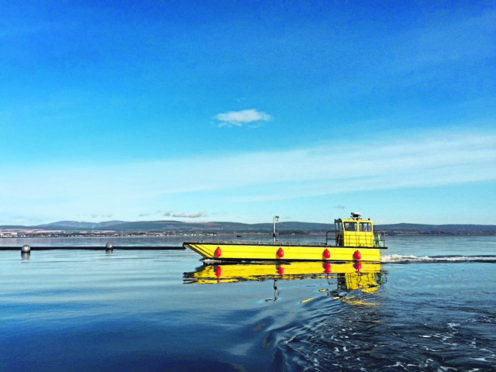The largest oyster farm in Scotland has been given the go-ahead by Highland councillors.
Cromarty Mussels, trading as MacKenzie Oysters, will be situated in Cromarty Bay, immediately to the west of Shoremill, alongside the B9163 between Jemimaville and Cromarty.
MacKenzie Oysters will cultivate non-native oysters, native oysters and mussels.
The oysters will be grown in bags on 24,000 trestles in 20 blocks in a wedge-shaped formation.
Three mussel lines more than half a mile long would lie along the northern boundary, with posts every 15ft.
The total site area is 165 acres.
A much smaller scale development previously on the site was abandoned after storm damage in autumn 2015, and there is also a disused oyster site to the east.
The farm has been two years in the planning and is likely to create six jobs, Highland Councillors were told at yesterday’s north planning meeting in Inverness.
Marine planning officer Dr Shona Turnbull said applications like the oyster farm had to be considered 30% on visual impact and 70% on ecological impact.
Visually, she said, the trestles will only appear at low tide, but dark, matt materials would be used to reduce the impact.
Ecologically the shellfish farm lies in a Special Protection Area (SPA), an SSSI and Ramsar (international wetlands designation) area.
Highland Council policy for Cromarty Firth SSSI allows for developments ‘that can be shown not to compromise the natural environment, amenity and heritage resources’.
In her report to councillors, Dr Turnbull said measures such as clearing damaged equipment, oyster bags and shell debris promptly along with other conditions will help mitigate any impact on biodiversity.
Scottish Natural Heritage and RSPB have also approved mitigation measures against any impact on birds in the Cromarty Firth SPA such wigeon, scaup, whooper swans, knot and osprey.
Black Isle councillor Craig Fraser welcomed the approval of the shellfish farm.
He said: “Once up and running there will be six full time jobs and seasonal workers.
“The company want to make sure much of the add-on benefits remain local.
“The area is designated a ‘shellfish water-protected area’ and unsually there were no objections from statutory consultees such as Sepa, Marine Scotland, SNH and RSPB.
“When complete it is likely to be the largest oyster farm in Scotland.”
